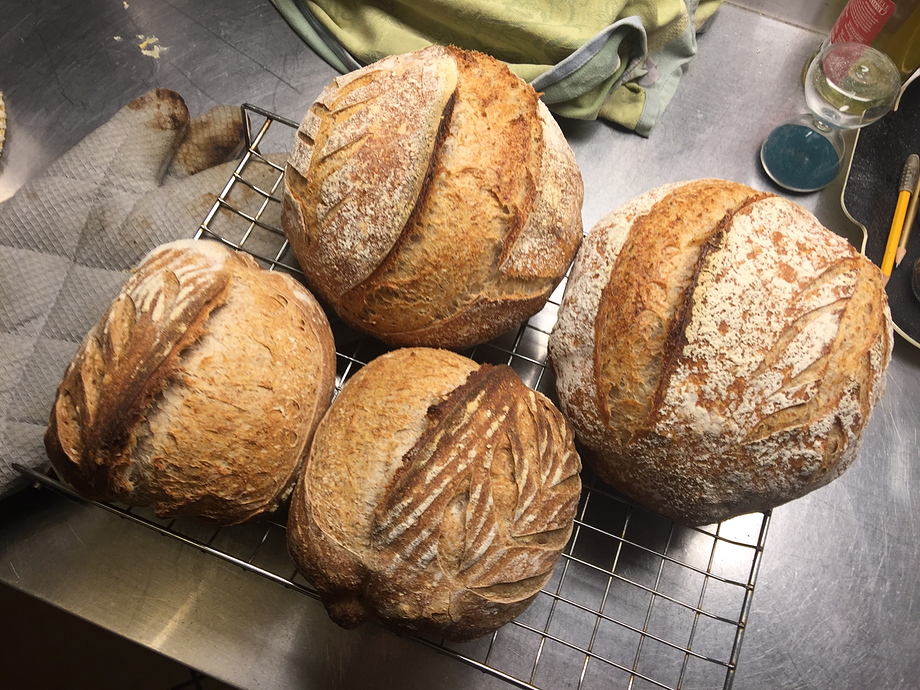
Lately I’ve started baking in greater bulk to satisfy my slowly growing list of people who pay me the ultimate compliment of paying for my bread. That could make sharing recipes here a little bit tricky, because not everyone wants to handle four loaves worth of dough at a time. ((I would love to get up to 12 loaves a time, but not with my current oven!)) Anyway, thanks to the miracle of baker’s math, I can give the quantities for a single loaf just as easily, so here goes.
Pre-ferment
I use my 100% hydrated leaven to start the pre-ferment, and as I store it in the fridge between bakes, that requires two builds to get it good and active, starting the morning before I want to start baking. To about 10g of starter I add 25g of flour and 25g of water, leaving that for about 12 hours to double. I then feed again with 25 g of flour and 25g of water, leaving it overnight. Next morning, I take 10 gm into a clean container and feed again with 25g flour and 25g water. This stays out on the counter for about 6 hours then goes into the fridge for storage.
The active starter goes into the pre-ferment.
- 50g active starter at 100% hydration
- 150g water
- 250g strong white flour
- 4g salt
First mix the water and the starter to break up the starter a bit, then add the flour and salt and stir well to incorporate everything into a rough dough. Put that aside to ripen. My kitchen is still pretty cold, so after a day the pre-ferment had barely moved and I had to put it into the fridge overnight. Next morning it had almost exploded out of its box. In warmer conditions, the pre-ferment will double in about 8-12 hours, but it really doesn’t matter much if you refrigerate to suit your schedule.
Final Dough
- 50g whole rye flour
- 50g wholewheat flour
- 50g einkorn flour
- 350g strong white flour
- 185g water
- 4g salt
- 1/2 tsp dry yeast or 15g fresh yeast (optional)
- All of the pre-ferment
The einkorn was my idea. If you don’t have any, add 50g of some other flour or just use 400g of strong white flour, rather than 350g. The yeast is completely optional, useful if you are in a hurry (or your kitchen is cold).
Mix the flours, salt and water and yeast if you’re using it. Knead the dough so that it has started to come together and then add a chunk of pre-ferment at a time, kneading between each chunk to start incorporating it into the dough. I guess about 4 or 5 chunks is right. It takes a bit of kneading to get everything properly mixed in but recently I have found this easier than mixing the pre-ferment with the water first. When the dough is uniform throughout, return it to the bowl, cover with a cloth and leave to bulk ferment.
After one hour, do one set of stretch and folds right there in the bowl. Wet your hand first and slip it gently under the dough, grab and pull up slowly, you don’t want to tear the dough, then fold it back onto the top of the dough and work your way around the ball of dough.
One (moving) picture being worth a thousand words, here’s my video.
Leave to bulk ferment for another hour, then do a second set of stretch and folds.
After a final hour of bulk fermentation, gently move the dough out onto the counter, shape, and prove for about 90 minutes before baking in a hot oven for about 50 minutes, with steam for the first half of the bake.